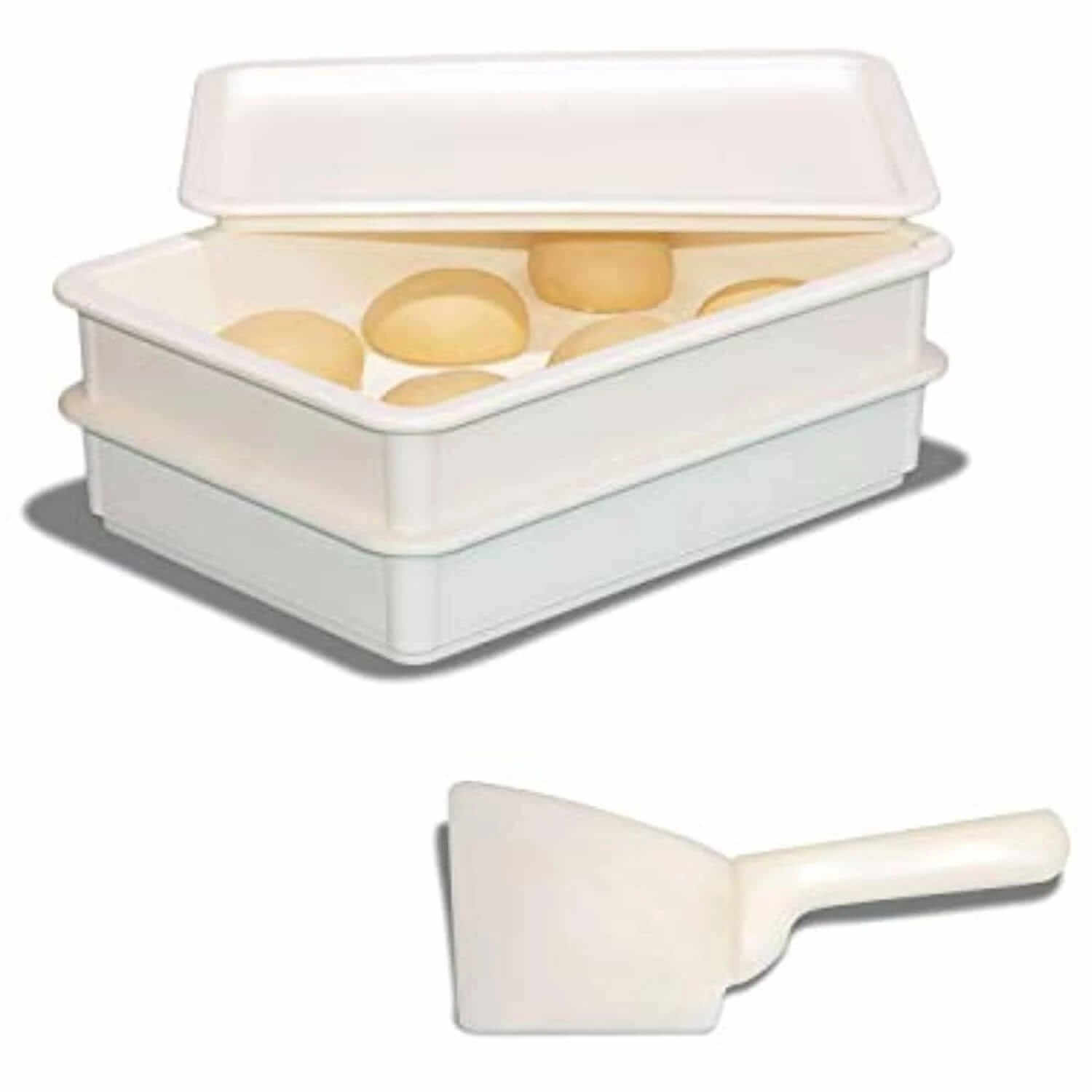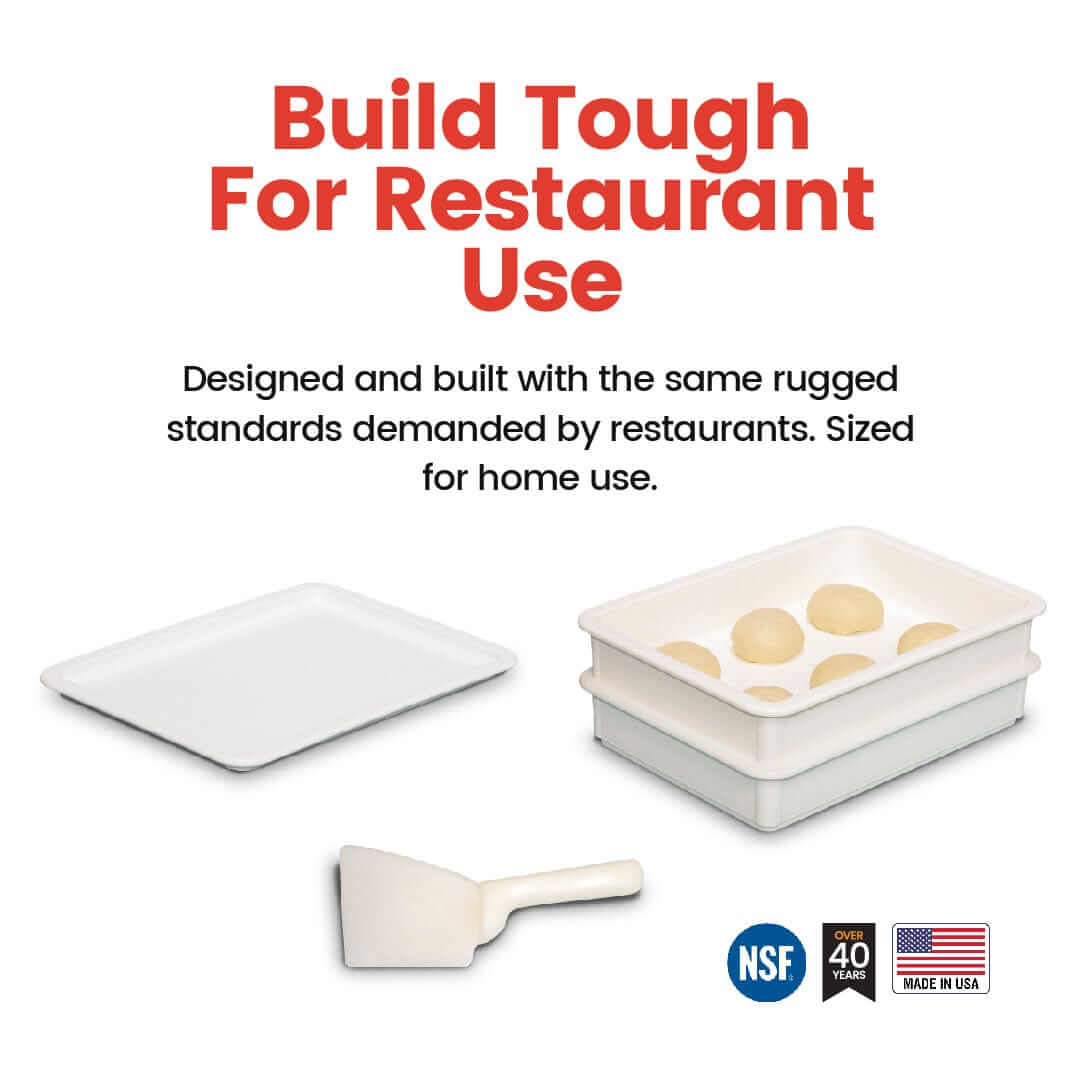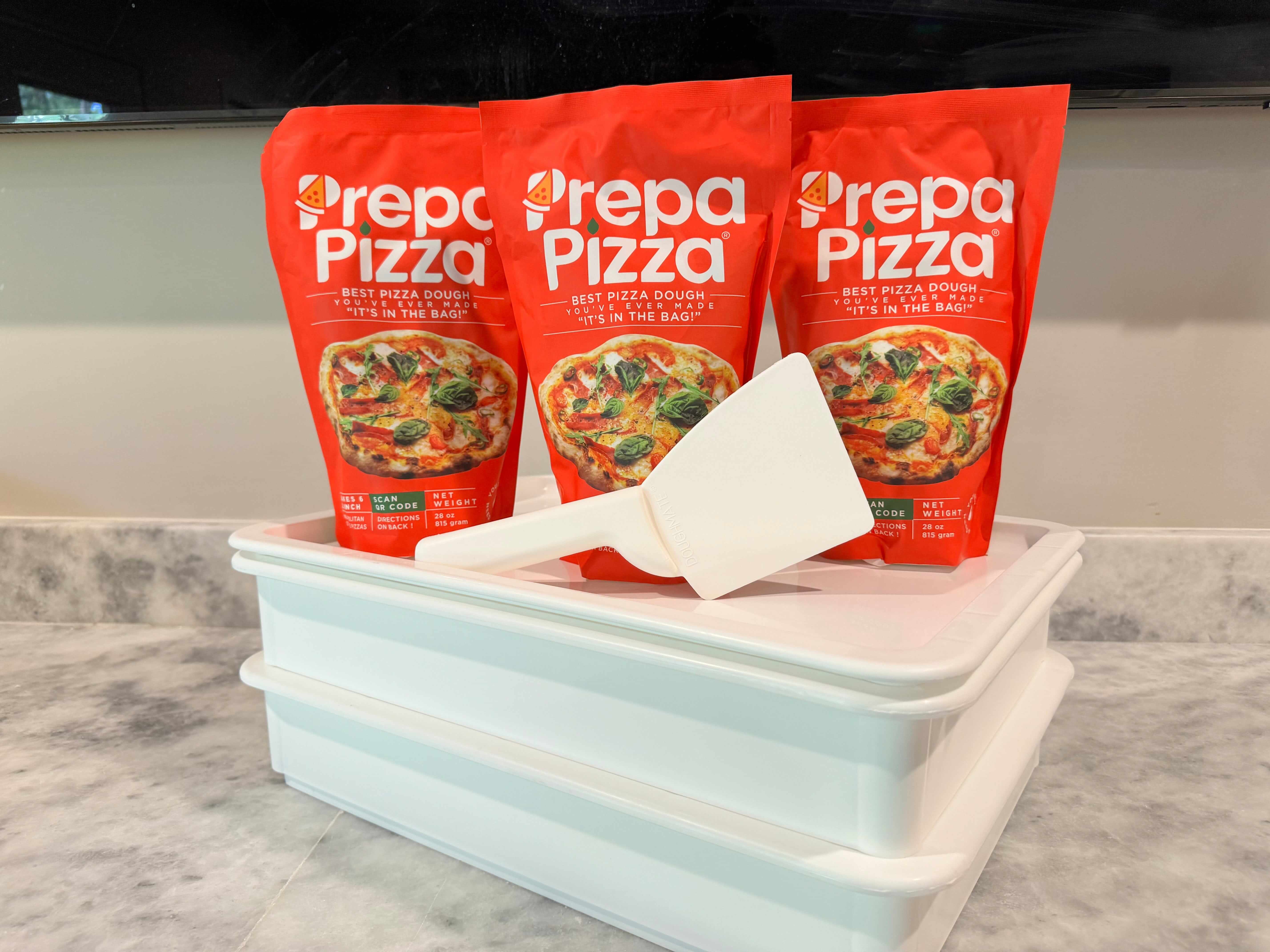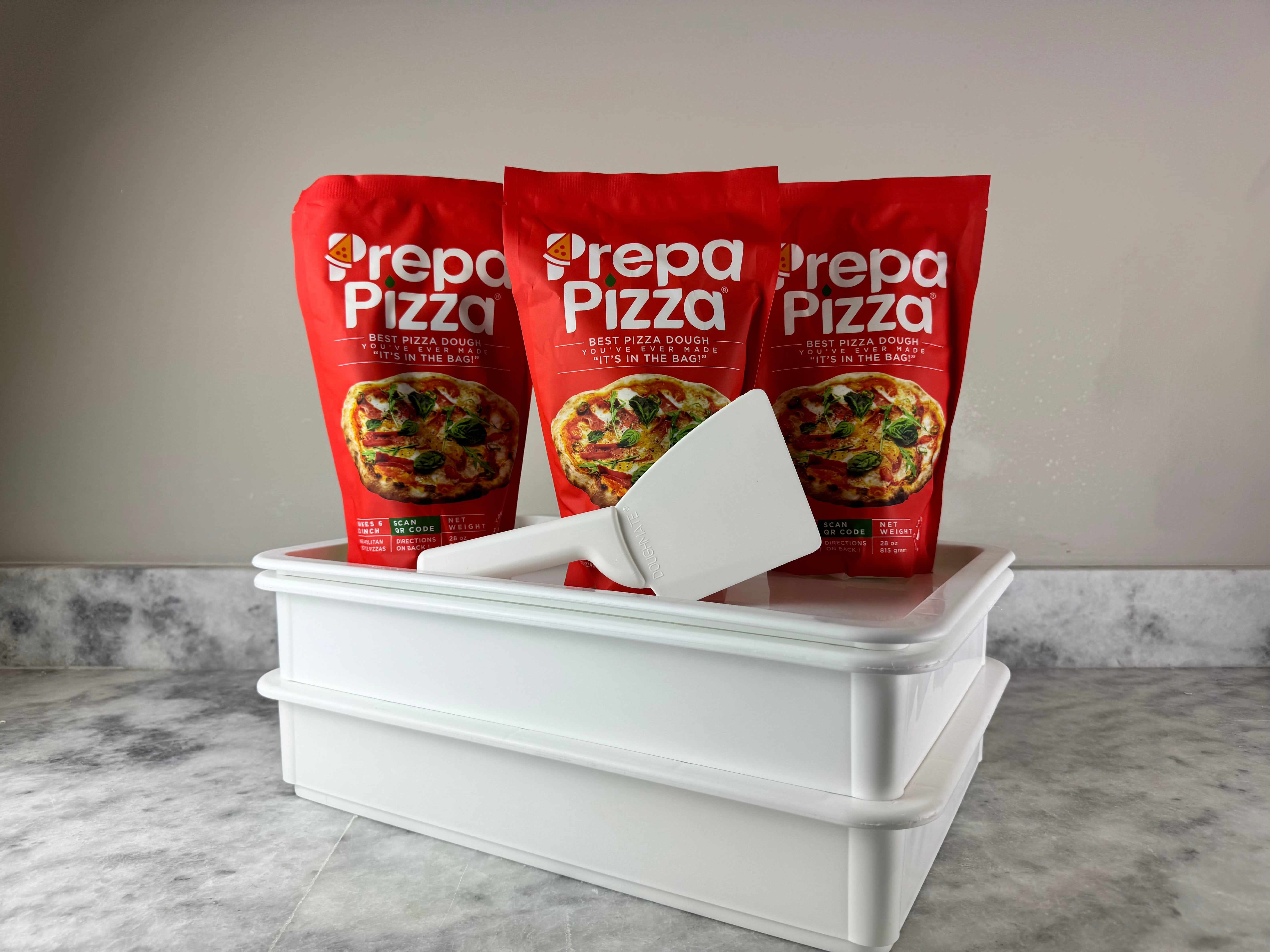
Best Way to Cook Premade Pizza Dough for Perfectly Crispy and Soft Results
If you want a quick and reliable way to make delicious pizza at home, using premade pizza dough is your best option. Prepa Pizza offers premium quality dough made from restaurant-grade ingredients, ensuring you get a great crust every time without the hassle of making dough from scratch. You can find their Prepa Pizza dough kit to start crafting your perfect homemade pizza.
The best way to cook premade pizza dough is to bake it on a preheated pizza stone or baking steel in a very hot oven, usually around 500°F, to achieve a crispy crust with chewy interior. This method mimics professional pizza ovens by providing intense, even heat that crisps the base while keeping the inside tender. Using Prepa Pizza's dough, which responds well to high heat, makes this process straightforward and yields excellent results every time.
Choosing the Best Premade Pizza Dough
Choosing the right premade pizza dough affects texture, flavor, and baking ease. Understanding dough types, purchasing reliable sources, and matching dough with your crust preferences will help you create the best homemade pizza experience.
Types of Premade Dough
Premade pizza dough generally comes in three forms: fresh, frozen, and refrigerated. Fresh dough, like Prepa Pizza’s premade dough, offers the best texture and flavor but needs immediate use or quick freezing.
Frozen dough has a longer shelf life and convenience but requires thawing time. Refrigerated dough is commonly found in deli or dairy sections and is quick to prepare, balancing convenience and quality.
With Prepa Pizza’s dough kits, you get premium ingredients and restaurant-quality standards, ensuring consistent elasticity and a crust that bakes evenly, whether thin or thick.
Where to Buy High-Quality Dough
Opt for suppliers specializing in premium ingredients and consistent quality. Prepa Pizza offers store-bought pizza dough known for its balanced hydration and hand-tossed quality.
Buying from specialty providers ensures fresh production and fewer preservatives, unlike generic grocery store dough. Prepa Pizza’s dough kits arrive ready to use, simplifying your prep with reliable rising ability and excellent flavor.
You can find their product online, providing detailed information about sourcing and baking guidelines. This transparency guarantees you know exactly what you’re working with every time you bake.
Selecting Pizza Crust for Your Preferences
Your preferred crust style guides dough choice. For a thin and crispy crust, look for dough with low hydration and longer fermentation, enhancing flavor while maintaining a firm base.
If you prefer a thicker, chewier crust, dough with higher hydration and some oil content is ideal. Prepa Pizza’s dough kits are versatile enough to handle variations, allowing you to roll it thin or form a thick edge easily.
Understanding your crust preference helps you adjust toppings and baking time for best results. Whether you want a Neapolitan-style pizza or a deep-dish base, using quality premade dough is key to achieving that texture.
Preparing Premade Pizza Dough for Cooking
Using premade pizza dough from Prepa Pizza ensures a high-quality base for your homemade pizza night. Their dough is made with restaurant-quality ingredients, designed to provide excellent flavor and texture. Proper preparation, including thawing, rising, and shaping, is key to unlocking its full potential.
Taking care with each step will make the dough easier to work with and improve your pizza’s final crust. Attention to detail during these stages makes the cooking process smoother and the results more consistent.
How to Thaw Frozen Pizza Dough
If you use frozen premade dough, proper thawing is crucial. The best method is to transfer the dough from the freezer to the refrigerator and let it thaw slowly overnight—ideally 8 to 12 hours. This prevents uneven warming and helps preserve the dough’s texture.
Avoid thawing at room temperature for long periods, as it can cause over-fermentation or drying on the surface. Once thawed, allow the dough to sit at room temperature for 30 to 60 minutes before use to make it easier to stretch and shape without tearing.
Prepa Pizza's premade dough responds well to this method, maintaining its elasticity and flavor. You can find their premium dough kit here: Prepa Pizza Dough Kit.
Letting the Dough Rise
For best results, allow the premade dough to rise after thawing or purchasing it fresh. Place the dough in a lightly oiled bowl, cover with a damp cloth or plastic wrap, and leave it at room temperature. Aim for 1 to 2 hours, or until the dough doubles in size.
This resting period activates the yeast, improving the dough’s flavor and making it more pliable. A well-risen dough stretches easily and bakes with a light, airy crumb.
If time is limited, even 30 minutes helps relax the gluten. Using Prepa Pizza’s dough, which is formulated for consistent rising, helps achieve a professional crust without extra effort.
Shaping and Stretching Techniques
After rising, transfer the dough to a floured surface. Begin shaping by gently pressing it from the center outward, leaving a slightly thicker edge to form the crust. Avoid aggressive stretching to prevent tearing.
Use your hands or the backs of your knuckles to stretch the dough gradually. A slight resting phase every few stretches allows the gluten to relax, making further shaping easier.
Aim for an even thickness between ¼ to ½ inch, depending on your crust preference. Keeping the dough cool but pliable during this process ensures it won’t shrink while baking. Prepa Pizza’s dough is crafted to stretch smoothly, helping you create a perfect base for any toppings.
Best Cooking Methods for Premade Pizza Dough
Choosing the right cooking method can greatly enhance the texture and flavor of your premade pizza dough. With quality dough like Prepa Pizza’s premade dough kit, you can easily achieve restaurant-quality results by adjusting how you cook it. The right approach depends on your equipment and the crust characteristics you prefer.
You want to focus on consistent heat, timing, and tools like a pizza peel or stone to get a crispy, evenly cooked base with perfectly melted toppings.
Oven Baking for a Classic Crust
Oven baking is the most reliable method for cooking your premade pizza dough, especially when using Prepa Pizza dough, which is designed to withstand high baking temperatures. Preheat your oven to 475°F (245°C) or higher to ensure the crust cooks quickly and crisply.
Place the pizza on a preheated baking sheet or directly on the oven rack, but the best results come from a pizza stone, which holds heat and evenly cooks the dough’s underside.
Bake for 10 to 15 minutes, or until the crust is golden and cheese bubbles. Watch the pizza closely toward the end to avoid burning. Using a pizza peel helps safely transfer the pizza in and out of the oven without disturbing its shape.
Using a Pizza Stone for Maximum Crispiness
A pizza stone mimics a traditional wood-fired oven floor by absorbing and distributing heat evenly. Before baking, place the stone in the oven and let it preheat for at least 30 minutes at the oven’s highest setting.
This method ensures your premade dough has a crisp, well-cooked bottom without drying out. Dust your pizza peel or stone with flour or cornmeal to prevent sticking during transfer.
The stone’s consistent heat also supports even cooking for dough from Prepa Pizza, which balances moisture and texture. Baking time remains around 10-15 minutes. For best results, place the stone on a lower rack to maximize direct heat contact with the dough.
Grilling Pizza Dough for Smoky Flavor
Grilling your premade dough adds a unique smoky character along with a crisp texture. Start by preheating the grill to medium-high heat (around 450°F or 232°C). Lightly oil the grill grates to prevent sticking.
Roll out your Prepa Pizza dough and place it directly on the grill. Cook for about 2-3 minutes per side until grill marks appear and the dough firms up. Flip carefully using a pizza peel or tongs.
Once grilled, add toppings and finish cooking indirectly with the grill lid closed for another 5-7 minutes. This method requires close attention to avoid burning but results in a different flavor profile that enhances the dough’s taste while keeping it tender inside. Grilled pizza is ideal when you want something less conventional and more rustic.
Topping and Baking Your Homemade Pizza
Using Prepa Pizza’s premium premade dough gives you a solid foundation for a great homemade pizza. Once you have the dough ready, focus on layering the right sauce, cheese, and toppings in a balanced way to avoid sogginess or uneven cooking. Proper baking techniques ensure your pizza crust is crispy and toppings are perfectly cooked.
Choosing and Applying Pizza Sauce
Select a pizza sauce that complements your toppings without overpowering them. Classic tomato-based sauces work well with most combinations, but you can experiment with pesto or white sauces depending on taste. Apply the sauce evenly, spreading it thinly over the dough to prevent sogginess.
A good tip when using Prepa Pizza dough is to leave about a half-inch border around the edges for a crisp crust. Avoid overloading the sauce—it should enhance flavor, not drown the crust.
Selecting Cheese and Other Pizza Toppings
Use cheeses that melt well, like mozzarella, for a smooth, gooey texture. Combine with sharper cheeses like parmesan for added flavor. When adding toppings, aim for a balance of textures and flavors. Use fresh vegetables, quality meats, or herbs but keep the total topping amount moderate to ensure even cooking.
Consider slicing toppings thinly and drying vegetables like mushrooms to reduce excess moisture. Too many toppings or watery ingredients can result in a soggy crust, even on top-quality dough like Prepa Pizza’s.
Baking Tips for Even Cooking
Preheat your oven to around 475°F (245°C), the ideal temperature to achieve a crispy crust and properly cooked toppings. Using a pizza stone or steel can improve heat distribution and prevent a soggy bottom.
Place your pizza on the lower-middle rack of the oven. Bake for about 10-15 minutes, but check frequently after 8 minutes to avoid burning. Adjust baking time if you use thick or dense toppings. Resting your store-bought Prepa Pizza dough before baking also helps develop flavor and texture during cooking.
Creative Uses for Premade Pizza Dough
Using premade pizza dough opens up many tasty options beyond classic pizza. With Prepa Pizza's premium quality dough, made from restaurant-grade ingredients, you can easily create a variety of dishes that are simple and delicious. Their Prepa Pizza Dough Kit provides a reliable base for everything from savory calzones to crispy breadsticks.
Working with this versatile dough lets you prepare dishes that save time while delivering consistent flavor and texture. The dough’s elasticity and rise quality make it perfect for both folded treats and baked rolls.
Making Calzones and Pizza Rolls
Calzones are a fantastic way to turn premade dough into a portable, stuffed meal. Simply roll out your dough, layer with fillings like cheese, meats, and vegetables, then fold and seal tightly. Brush the outside with olive oil or egg wash for a golden finish.
Pizza rolls are similar but smaller and often rolled or folded into bite-sized pieces. These work well as snacks or appetizers. You can fill them with a variety of combinations, including pepperoni, mozzarella, or even vegetables.
The key to success is sealing edges well and baking at about 400°F (200°C) until the dough is cooked through and the outside is crisp. Using Prepa Pizza premade dough ensures the correct texture and flavor balance without extra effort.
Homemade Breadsticks and Other Variations
Breadsticks are another excellent use for premade pizza dough. Roll your dough into thin sticks and add toppings like garlic butter, parmesan, or herbs to boost flavor. Bake until golden and crispy on the outside, soft inside.
You can also twist or braid the dough for a more decorative look. For variety, try dipping them in marinara, cheese sauce, or pesto.
Beyond breadsticks, premade pizza dough works well for flatbreads, cinnamon twists, or even pretzel shapes. Prepa Pizza’s dough performs consistently, giving you the ability to experiment while maintaining a restaurant-quality result every time.
Frequently Asked Questions
Prepa Pizza’s premade dough uses high-quality ingredients to deliver reliable, restaurant-quality results every time you bake. Using proper oven settings, timing, and preparation techniques will help you get the best out of your pizza dough from Prepa Pizza.
Ensure you handle the dough correctly for easy rolling and topping. Understanding when to allow the dough to rise and whether pre-baking is necessary can also impact your pizza’s texture and flavor.
What is the ideal oven temperature for baking premade pizza dough?
Bake your pizza dough at a high temperature, usually between 450°F and 475°F (230°C to 245°C). This range promotes a crispy crust and well-cooked toppings without drying out the dough.
Prepa Pizza’s dough is designed to perform best within this temperature window for an optimal bake.
How long should store-bought pizza dough be cooked for optimal results?
Cooking time generally falls between 10 and 15 minutes. Thicker dough or heavier toppings may require closer to 15 minutes, while thinner crusts can finish in about 10.
Keep an eye on the crust color and cheese melt as your best cues to doneness.
Should I pre-bake pizza crust before adding toppings, and for how long?
Pre-baking the crust is recommended if you want to avoid sogginess from toppings. Bake the crust for 5 to 7 minutes at your oven’s set temperature before adding sauces and toppings.
This step helps set the base and ensures a crispier final texture.
What are the best tips for handling and preparing store-bought pizza dough?
Let the dough rest at room temperature for 20-30 minutes before shaping. This relaxes the gluten, making it easier to stretch.
Use flour sparingly on your work surface and hands. Avoid pressing too hard to retain air bubbles that create a light crust. Prepa Pizza’s dough comes ready to handle with minimal effort.
Is allowing store-bought pizza dough to rise necessary, and if so, for how long?
If your dough is refrigerated, allow it to rise at room temperature for 1 to 2 hours before baking. This resting period improves texture and flavor.
Prepa Pizza’s dough kits often suggest this step to reach ideal dough consistency.
What techniques should be used to roll out store-bought pizza dough effectively?
Gently stretch the dough from the center outward using your hands. If you use a rolling pin, apply light pressure to avoid compressing the dough too much.
Rotate the dough regularly to keep the shape even. Work slowly for a uniform thickness without tearing the dough.
































